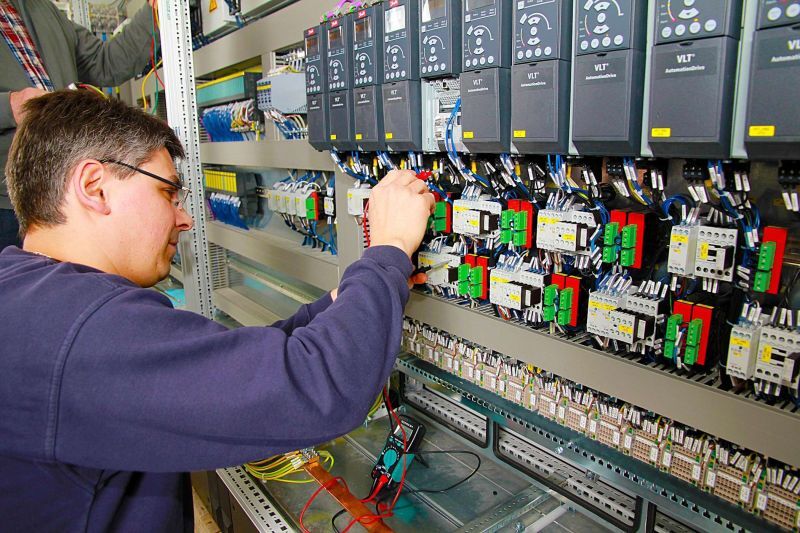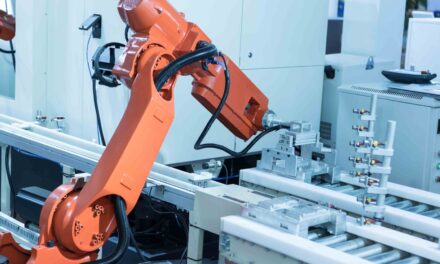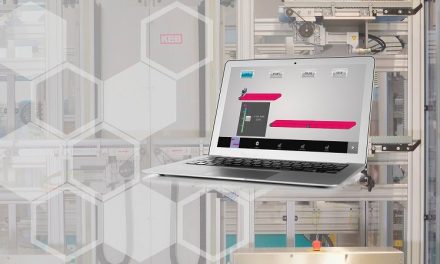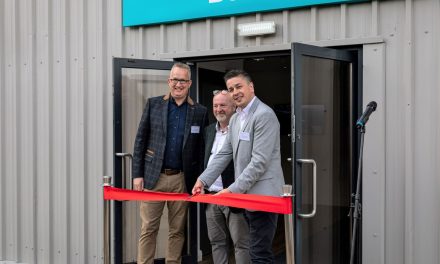“Doing more with less” is a common goal for many industrial businesses, especially as today’s plants face pressures to maintain high production levels with lower machine footprints. Here, Bradley McEwan, business development manager at Beckhoff Automation UK, the industrial PC provider, explains how new servo drive and connectivity technologies can help manufacturers do a lot more with less.
Modular units are becoming more established as a solution to modern production demands. They are faster to implement in new spaces, or integrate into existing production lines, with scope for manufacturers to be more responsive to changing conditions and demands to offer greater flexibility to their customers. This latter point includes how trends in industry are moving away from mass-produced products, towards individualised offerings.
A less-considered advantage of modular units is how these can support in reclaiming valuable floor space in the industrial plant. Concerns surrounding machine real estate — or, of how square metres of plant space contribute towards revenue — are growing among manufacturers. These considerations go beyond the bottom line, with factors like throughput and environmental impact also being among the key considerations.
Aside for the obvious point that smaller machines occupy less space, if implemented correctly, such equipment makes it possible to increase manufacturing output without expanding a facility. In addition, smaller and flexible modular based machines can better align with industry’s focus on Internet of Things (IoT) devices like remote sensors.
Yet, alongside the advantages of modular units, there are also challenges. They include how best to connect, integrate and power these machines in the production line. For such demands, we must turn to new approaches to machine design and functionality.
Panel-less system
One such approach relates to the control panels of machinery. Control panels can sometimes take up several metres of space in a production line — machine real estate that could otherwise be devoted to production. Furthermore, it is often the case among manufacturers that goals to reconfigure or expand production lines lead to an increasing number of mounted devices.
Saving space in control panels with downsized components is, therefore, the way forward in cases like these. This is a challenge when the number of devices used in control panels is increasing, due to more advanced and more composite machine functionality. Nevertheless, it’s a challenge that Beckhoff met, with a view to benefitting original equipment manufacturers (OEMs) and end users.
In one instance, Beckhoff worked closely with a well-known global packaging OEM. Beckhoff was enlisted to support with reducing costs throughout the complete lifecycle of the machine — from design, procurement and manufacturing to commissioning, shipping and onsite installation. Ultimately, the client wanted to reduce the footprint size of its equipment.
The resulting solution was to remove the control cabinets and build the automation components into the structure of the machine itself. The idea of a panel-less machine complements Beckhoff’s concept of “automation without cabinets”, whereby the size of the control cabinet is minimised. Whereas, previously, there were space requirements in the cabinet for the controller, servo drives and inputs/outputs (I/Os), this can now be drastically reduced by the automation without cabinets concept.
This also extends to using components that are rated by the Ingress Protection (IP) code, IP65, which means they can withstand exposure to water; for example, during the washdown of equipment. Such components might include Industrial PCs (IPCs) for PC-based control, machine-based I/O systems and, now, also the IP65 AMP drive system. By making it possible to minimise the control cabinet, the system allows for significant savings in terms of material, space, cost and installation effort.
Side-by-side mounting
With the AMP8000 servo drive, the machine’s power electronics have been moved directly to the machine. This reduces the required space in the control cabinet to essential functions like incoming power, power distribution, isolators and fusing.
More specifically, the system integrates a safety rated servo drive in a very compact design, directly into the servomotor. This unique technology takes away the need to increase the motor’s frame size for a given power, which sets the system apart from Beckhoff’s competitors and is beneficial for modular machine concepts. The AMP8000 system allows full integration of the drive technology into the most individual machine concepts. In other words, the system can be flexibly adapted to a customer’s individual requirements, with a design flexibility that can minimise the space requirements in the control cabinet.
Another challenge that relates to flexibility, is to ensure that the machine can integrate, quickly and seamlessly with other equipment in the production line. Those other systems will likely have been supplied and installed by multiple providers. Fortunately, one of the key benefits of the Beckhoff system is its ease of integration into third party systems.
One cable automation
Beckhoff’s “one cable solution” complements the AMP8000. The solution has been developed to simplify the logistics that are typically involved in the installation of modular units and also minimise wiring errors. The idea is that a single cable can run through the machine in order to connect multiple distributed servo drives and I/O systems through a distribution module. Reducing the cabling to plug and sockets drastically also reduces wiring time and errors.
The key technology here is EtherCAT P, a new development in EtherCAT technology on the cabling level. The “P” stands for power and allows the use of standard four-wire Ethernet cable, not only for data, but also for two electrically isolated, individually switchable 24 Volt (3 Amp) power supplies.
With EtherCAT P, multiple EtherCAT devices can be connected, and complex machines or machine lines can be implemented with simple topologies. As a result, only one cable is required to connect and power inputs/outputs (I/Os) and other field devices, including servo drives.
The Beckhoff EtherCAT P I/O portfolio is comprehensive. Instead of having to use multiple connection cables between a control cabinet and a machine, a single cable to the AMP8805 distribution module is all it takes because each of the AMP8000 distribution servo drives is, in turn, connected to the distribution module with just a short cable. With EtherCAT P, the cable routes to the motor can be laid out much more clearly, and space requirements in the control cabinet are reduced to a minimum.
Furthermore, only one cable type is required for the entire system cabling. Also, preassembled system cables significantly reduce the time and cost required for logistics, cabling and commissioning, and minimise the risk of error.
Through the use of these concepts, Beckhoff can support in removing costs from the complete lifecycle of the machine, from design all the way to end user implementation. In doing so, it’s possible to increase return on investment, return on assets and total cost of ownership for all parties.
For many, subtraction doesn’t come naturally. But, with the right equipment, it’s certainly possible for manufacturers to achieve a lot more with less.




